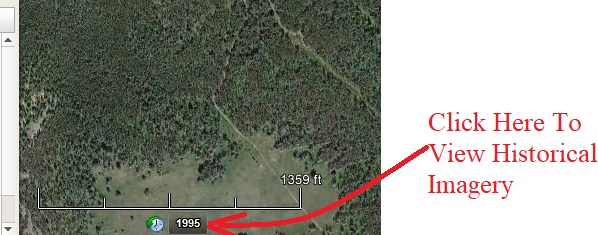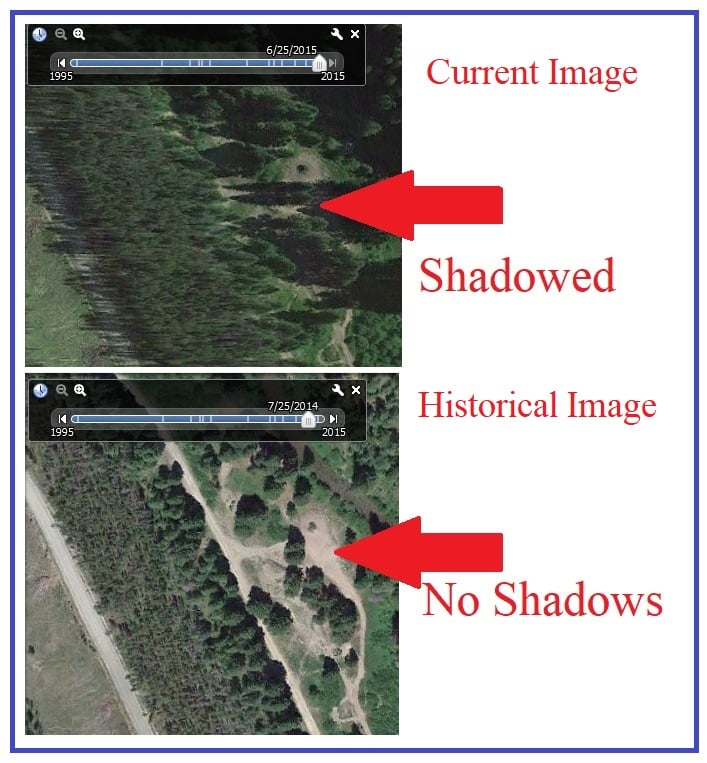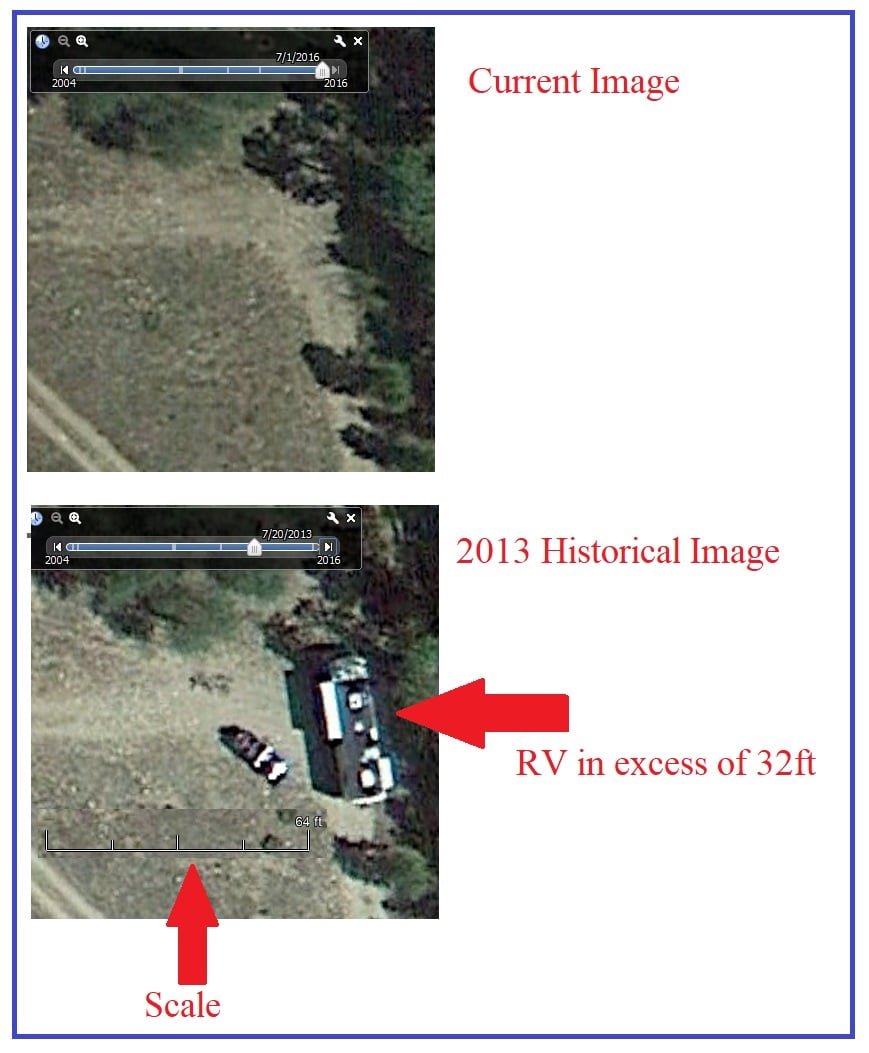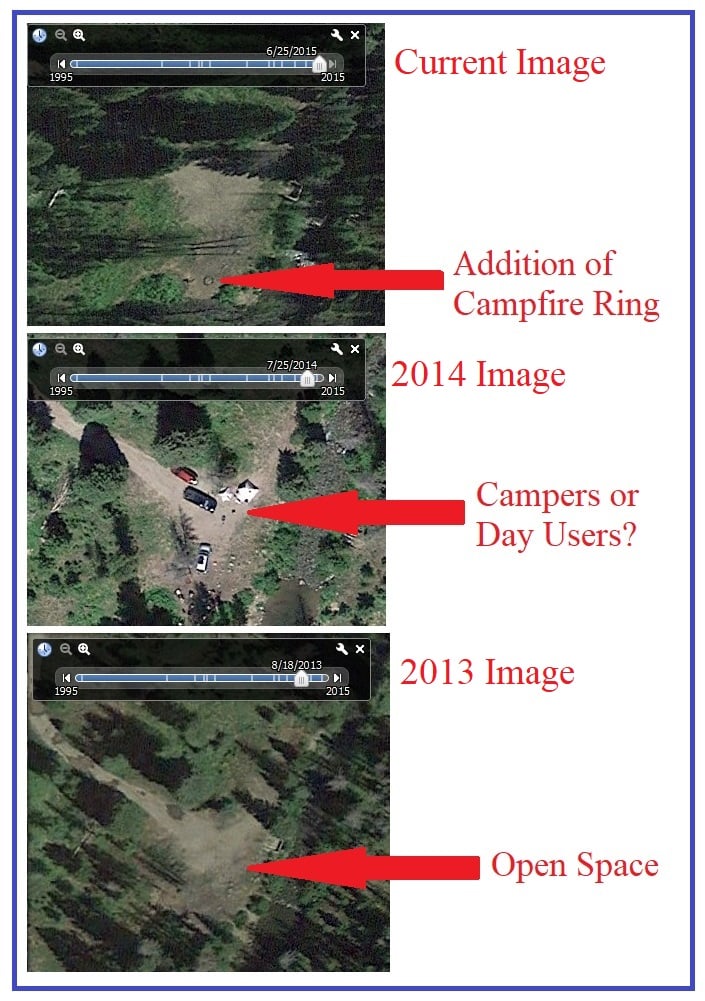I have been using Google Earth satellite imagery to locate boondocking locations for at least ten years now. The images quite often show where others have camped in the past, indicated by an RV in the image, the presence of a fire ring, or both.
For the past 5+ years, Google Earth has been updating its imagery fairly often, and the resolution has been improving as well.
While the new imagery is typically more detailed than in the past, I have found that going back and looking at the “Historical Imagery” of a few years ago can be very useful in determining what is and isn’t a boondocking location and if it is accessible by my rig. Here are a few tips and tricks on how I use historical images.

Historical imagery button – All screenshots via author (Dave Helgeson)
Through the years, the images have been taken at different times of the day. In the current image, a potential campsite might be shaded where you can’t make out the size of the space or see if there is a campfire ring, but it might be shown in full sunshine in an older historical image, allowing you to get a better look at it.

Older photos may not have shadows
The images have been taken at different times of the year, allowing you to gauge how likely the campsite might be occupied when you plan to visit. By reviewing the historical images you can see if there is someone camped in the space or not, the time of year, and with a little research, determine the day of the week. (Are certain times of the year more popular than others? Weekends more popular than weekdays?)
Historical imagery often shows different sizes and types of RVs that have occupied the site, giving you much-needed information on whether the site is accessible by your rig. If a big Class A motorhome or fifth wheel can make it to the site, my 26-foot high clearance travel trailer pulled by a 4×4 truck should have no problem.

Historical imagery shows a large RV
You can see the progression of the campsite through the years. In the photo below, you can see an undefined space in the oldest image, people using the space with a pop-up canopy in the next image, and finally the emergence of a fire ring in the most recent image.

As I always say, if you can see a campfire ring on public land, I guarantee it is a legal boondocking spot as day users seldom construct a fire ring. To view the historical imagery, click on the “year” button on the bottom left corner of your laptop screen, which will display the range of years available in the top left corner of your screen.
Using historic images to find information about a boondocking site before my wife and I get there helps me avoid unpleasant adventures in RVing!

That is definitely one of the best types I have seen in a long time. Thank you.
Should say tips not types! No obvious way to edit spell changes.
re: “As I always say, if you can see a campfire ring on public land, I guarantee it is a legal boondocking spot as day users seldom construct a fire ring.”
That’s a big overstatement especially the word “legal”. “possible” would be more accurate.
Rules for boondocking in National Forests and other jurisdictions are constantly getting more restrictive. Even where the rules haven’t changed, there are lots of campsites that aren’t “legal”. Some fire rings are on private property-created by the owner or hunters that had permission.
Irv, Note: I did state “ public land “ which can be determined using the Free Roam app, PublicLands app or Motor Vehicle Use Maps. Once you know which public agency has jurisdiction, it’s just a matter of going on their website or calling to find out their dispersed camping regulations which typically state, “ select a spot where others have previously camped”. From my experience it they don’t want people camping in a given spot they place large rocks to block off vehicle access which you can also make out via Google Earth. As you pointed out, never camp on private land without obtaining the owners permission first.
I love this to add to my boondocking arsenal. Thank you! I’m an avid user of all media to find spots, including G Earth, but never thought to check out historical images. Brilliant!
Another tip for camping spots is the measurement tool in G Maps – right click & select “measure distance” then put your mouse on the end of the length you want to measure. I have found it is very accurate, helps to decide your rig will fit somewhere or not.
Is there a way to do this using a smart phone app?
Has this historical info disappeared? I don’t see any way to access this on the current Google Maps.
I don’t believe historical images are a feature of Google Maps. If you will go to Google Earth you will find the historical images by clicking on the “Year” at the bottom left corner of the map.
Oh I see. I got Google Maps and Google Earth mixed up in my head. Thanks for making the distinction. I downloaded Google Earth and I see how to access historical views.
Thank you so much,
Dave
You’re welcome